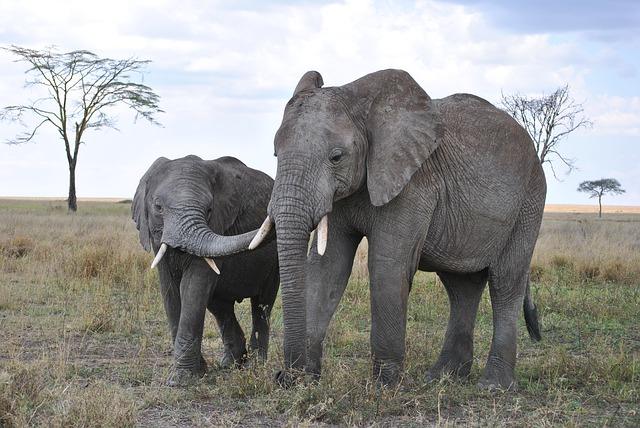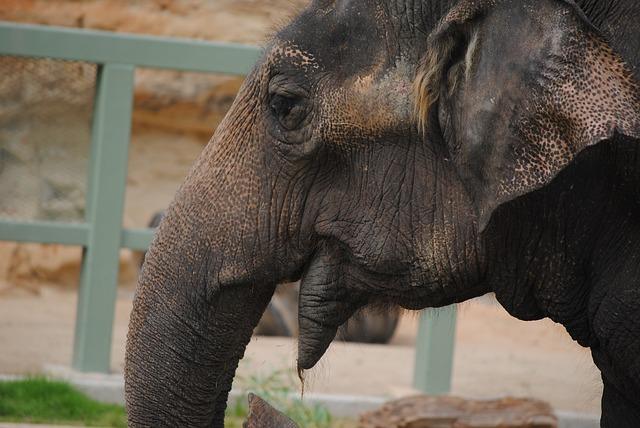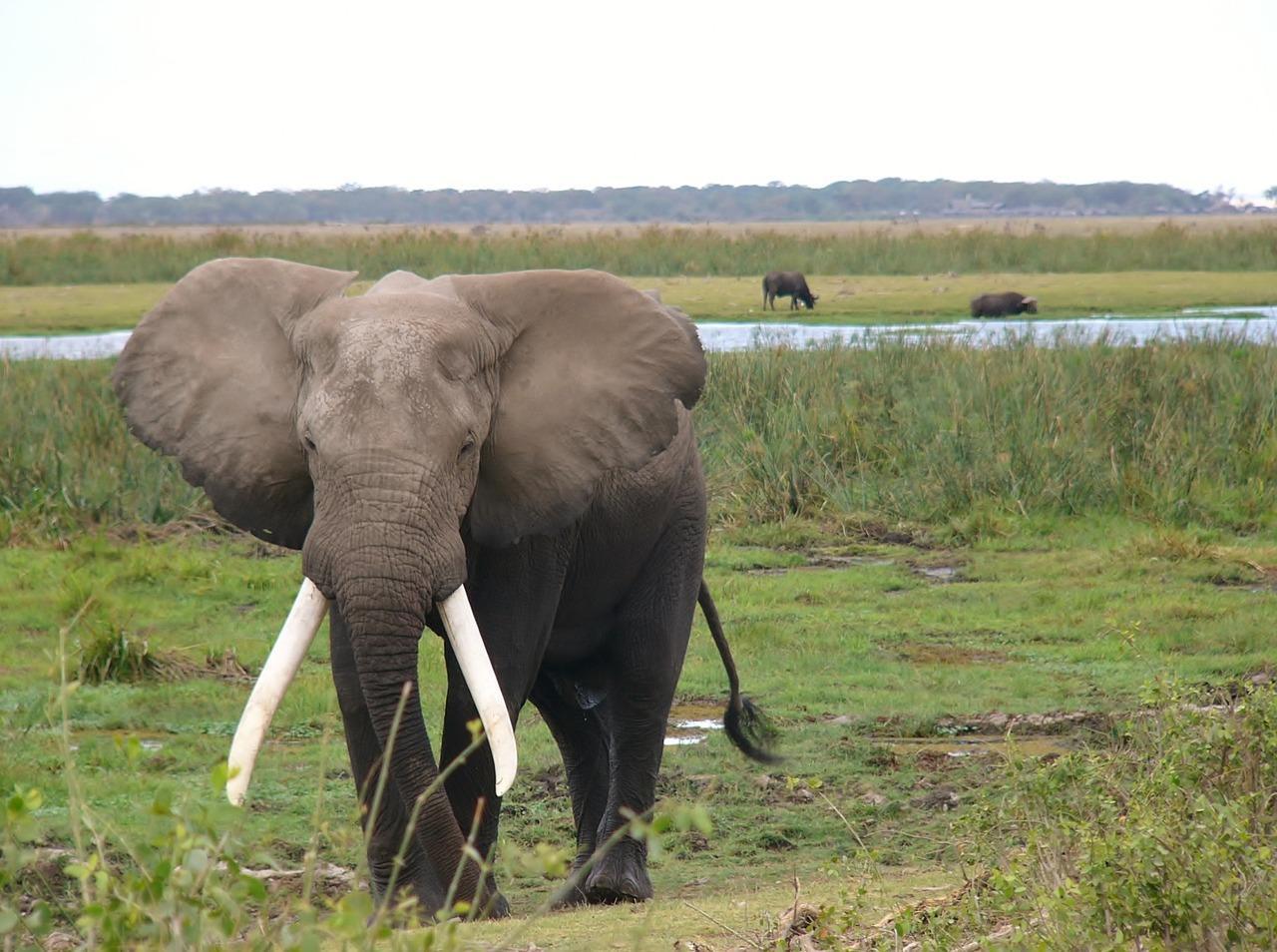Elephants are large mammals, which include two species: African and Indian. Previously, Mammoths (extinct during the Ice Age) and mastodons (extinct during the first human appearance on the North American continent) lived on Earth. In the article we answer the question: “Where do elephants live?” And consider their habitat and habits.
Differences between Indian and African elephants

Despite the apparent absolute similarity between the Indian and African elephants, there are many differences. Let's consider them in more detail.
- African elephants are superior in size and weight to their Indian counterparts. The height of an adult animal living in Africa reaches 3.7 meters and a mass of 6.5 tons. For comparison, Indian relatives have these indicators at the level of 3.5 meters and 5 tons.
- African elephants have larger ears, through the thin skin of which veins are clearly visible. It is noteworthy that for each individual, the pattern of veins on the ears is individual, like in humans fingerprints.
- A distinctive feature of African elephants is the presence of long, durable tusks in each animal, regardless of gender. In Indian elephants, only males possess such decoration. Tusks grow throughout life and are an indicator of age.
- The Indian elephant is calmer. Thanks to simple training, he becomes a reliable assistant to the person. He is taught how to transport trees, lay boards, or get objects from rivers.
These are not all the interesting facts about these animals. The following information is useful for students who wish to get the maximum score for the exam. Among the elephants there are "lefties" and "righties." Belonging to a certain category is determined by which tusk is shorter. These animals work with one tusk, as a result of which it wears out faster.
The bones of elephants are expensive as an ornamental base, so they often die at the hands of poachers. Now the ivory trade has been banned, but still a hundred of these amazing animals die every year due to human faults.
Elephants have 4 molars. The weight of each tooth the size of a brick reaches 2-3 kilograms. Throughout life, animals change molars 6 times. With age, the sensitivity of the teeth increases, which forces animals to stay closer to marshy areas with soft vegetation.
From other animals, the elephant is distinguished by its impressive body weight, construction, behavior and the presence of a long nose. A trunk is a combination of the upper lip and nose with which he takes a shower, breathes, sniffs, drinks and makes sounds. With this organ, containing 100 thousand muscles, the animal takes objects weighing up to a ton and carries tens of kilometers.
Habitat and habits of elephants

The African giant lives in the steppes of Africa and Egypt. Indian individuals live in India, Ceylon, Indochina, Burma.
- Elephants live in a herd of up to 50 individuals, which are connected by norms of behavior. Some live separately, as they often show aggression and are dangerous.
- The herd has a friendly atmosphere, relatives care about the offspring, support each other.
- These are socially developed animals. They can show emotions and remember objects, places and people.
Elephants eat 130 kg of food per day (leaves, bark, fruits) and spend most of the time searching for it. They sleep no more than 4 hours a day. Animals are often near rivers or lakes and drink 200 liters of water per day. The elephant is a good swimmer and easily swims huge distances regardless of body weight.
The giant has a massive skeleton, accounting for 15% of body weight. The skin reaches a thickness of 25 mm and is shrouded in sparse hairs. On average, an elephant lives 70 years.He does not know how to jump, but accelerates the speed of running to 30 km per hour.
The female carries the baby 88 weeks. This is a record among animals. The baby elephant is born every four years with a weight of about 90 kg and a height of about a meter. Having a baby is important for herd members.
These mammals have a clear communication language. When the elephant is in a low mood or aggressive, the ears become apart. For protection, tusks, a trunk and massive legs are used. At the moment of danger or fright, the animal squeals and, running away, literally blows everything in its path.
Where do elephants live in captivity?

Almost every zoo has elephants. It is not surprising, because they cause special interest in the public. But sometimes even famous zoos, due to the lack of a suitable place for keeping, refuse these animals.
In confined spaces, elephants suffer from boredom. In the natural environment, they spend a lot of time searching and absorbing food. In a small paddock, you can’t roam free enough, and a small number of individuals leads to disruption of social contacts.
European zoos are trying to put at the disposal of elephants spacious pens for walking. Less complaisant males, who are dangerous in a state of troubles, allocate additional space. Some zoos provide shelters for females with offspring. This allows members of a small herd to get acquainted with the replenishment.
Of great importance in breeding elephants is the diversity of walking. Large elephants equip their enclosures so that animals move freely. Such conditions are more suitable for successful captive breeding.
Elephants are socially developed mammals. For many reasons, this species is on the verge of extinction. Animals need protection and protection. This fact has found many positive reviews among scientists and officials. Reserves are actively created, where animals live under protection. The territory of such complexes should correspond to the usual habitat. At the moment, several reserves meet these requirements, including:
- Bandipur National Park, India.
- Amboseli National Park, Kenya.
- Elephant Sanctuary in Knysna, South Africa.
- Kuala Gandah Elephant Sanctuary, Malaysia.
- Elephant Safari Park, Bali.
Each of these places is ideal for an entertaining summer vacation.
People harm the environment, so many species of animals die out, but the hope remains that one of the largest mammals - elephants will continue to live not only in captivity, but also in their native environment. The task of man is to help ensure that children can enjoy the greatness of these animals in the vastness of the savannah and forests.










